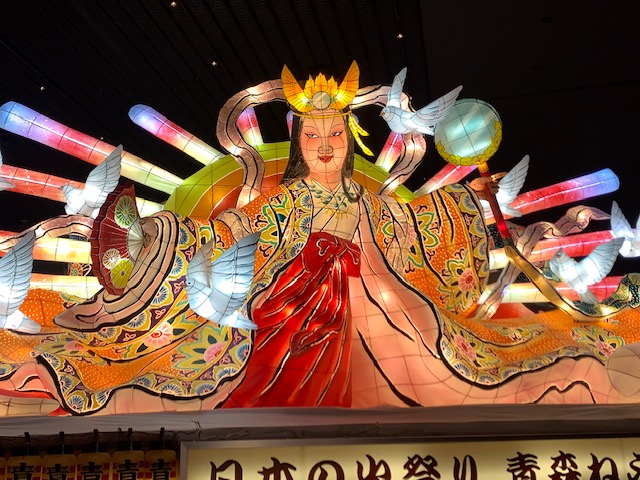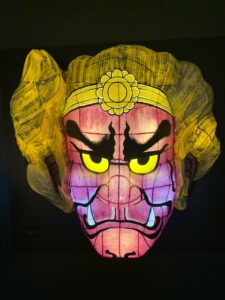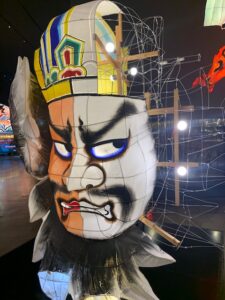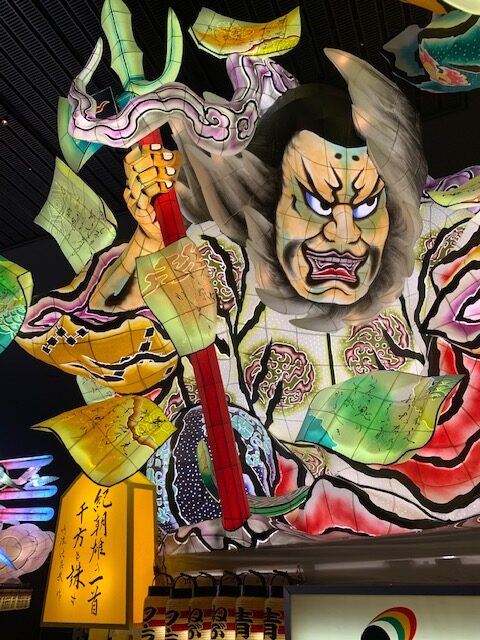When Isabella Bird arrived in Aomori in 1878, she was far from pleased with the town, calling it ‘a miserable looking place, a town of grey houses, grey roofs, and grey stones on roofs, built on a beach of grey sand, round a grey bay’.
The thunderous rain that greeted my arrival seemed determined to support her, but much has changed since then and the thrusting high buildings, the busy port and lively downtown gave a different impression.
Hot springs and fine food and colourful festivals – these are a few of my favourite things. Japan must have more festivals than any other country I can think of, outside India. A typical event comprises a procession around the parish accompanying portable shrines in which sit the kami. Since every Shinto shrine has an annual festival, and many Buddhist temples too, there are festivals going on somewhere pretty much every day, particularly in spring and autumn (important times for rice cultivation). Some have a wider fame, because of their prestige or spectacular nature. One such is Aomori’s Nebuta Matsuri. In a town of 280,000, it attracts some two million visitors.
The festival’s centrepiece is an evening parade of illuminated floats in scintillating colours which depict larger-than-life heroes and monsters. The effect is spectacular. Up to twelve meters long, the floats are spun around at intersections, accompanied by pounding taiko, cymbals and flutes. Following them are costumed dancers called Haneto. Dressed in flower hats and yukata (summer kimono), they hop and bounce energetically, frenetically. This is one of those occasions when buttoned-up Japan lets go and gets wild.
Each year a different theme is chosen, whether mythological or historical or contemporary. In 2019, in honour of the new emperor, imperial accession was the theme, and the most elaborate float featured the rock cave into which the sun goddess, Amaterasu, retreated after falling out with her brother. The mythical matriarch is the supposed progenitor of the imperial line.

In 1926 Emperor Hirohito, who claimed direct descent from her, assumed the throne as a living god, but renounced his divinity at the end of WW2. That did not prevent his grandson, the current emperor, from spending the night communing with Amaterasu in the ascension rites of 2019. Quite an experience, one would imagine, for someone who did postgraduate studies at Oxford in Thames navigation.
The Nebuta Museum is ideal for a rainy day, since you can see the floats up close without being jostled by two million others. Made of washi (Japanese paper) on bamboo frames, they are shaped, painted and lit internally by up to 800 electric bulbs. (Traditionally it was by candle-light; talk about a fire risk!) The floats can weigh up to four tons and are pulled by teams of thirty or more. Their simplicity belies the artistry involved, and each year the best designs are selected for special attention. Some of the creators have become well-known, and it is said festival connoisseurs can identify them by the shape of their noses – the noses of the creations, that is.
Not far from the museum was a restaurant advertising Aomori’s most famous dish, Kaiyakimiso, A scallop shell is heated over a flame, in which mushrooms and onion simmer in a broth of miso sauce topped with an egg. A little too salty for my taste, but it certainly felt wholesome, complemented by a sip or two of the local sake. Even despite the rain Aomori looked anything but grey.






Leave a Reply